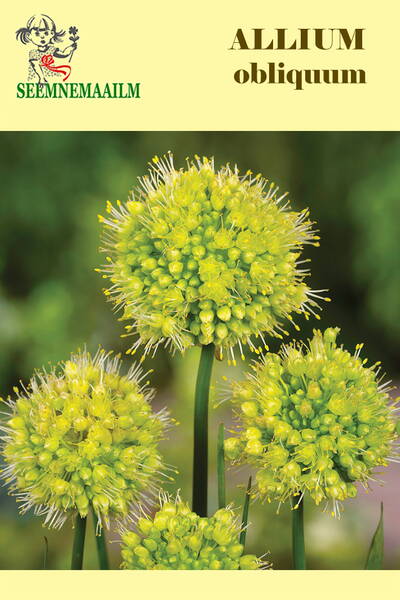Ex Tax: 2.15€
Perennial, mid-early (30-35 days from the beginning of regrowth to technical suitability) type of onion.
The leaves are dark green without wax coating, wide, flat, pointed at the end, the surface of the sheet is rough. On average, up to three leaves per shoot, 33 cm long, 2.5 cm wide. The weight of leaves from one plant is up to 14 g. The height of the false stem is 9.5 cm. The yield of green leaves is 1.25 kg / sq.m. Winter hardy.
Cultivation in a perennial culture in one place is carried out for 6 years, carrying out a single cut of greens in late May - early June (no more than 60% of the leaves are cut from the plant). Recommended for use fresh green leaves and for canning.
An interesting alternative to many purple flowering onions. Attractive to butterflies and other pollinators. Forms decorative seed heads that look pretty until winter.
Flowering plant height: 60 cm.
Natural flowering period: June - August.
Winter hardiness zones: Z4 - Z8.
Usage: for rock garden, for natural style gardens, suitable for cutting.
1.0 g = 340 seeds.
Twisted-Leaf Garlic - what is it?
Oblique onion is also called uskun onion or mountain garlic. This is one of the earliest vegetable onions, it grows immediately after the snow melts.
Botanists consider the oblique onion to be an ancient, relic plant that appeared in the pre-glacial period. Currently, this vegetable ornamental and medicinal plant is successfully cultivated.
But! Natural stocks of slanting onions are rapidly declining - and at the present time they are already in need of protection.
This is interesting.
This type of onion is widespread in the south of the European part of Russia, in Siberia, Central Asia, as well as in Western Europe and northwest China. It grows in the mountains along river valleys, in forest clearings, slopes, in the belt of trees and shrubs. Less common in the flat parts of the range in glades and meadows. Plant rich, moderately and sufficiently moist soils. It has long been grown in gardens by the local population of Siberia. Outside of natural distribution in culture, it was first tested at the end of the 19th century in the St. Petersburg Botanical Garden.
What is useful in it?
Allium obliquum is a good vitamin-containing and volatile plant.
The leaves contain 11.7-16.2% dry matter, sugar, ascorbic acid, carotene, as well as coumarins, essential oil, fibre, protein, glycosides, saponins, tannins. These onion leaves are rich in vitamin C - up to 160 mg%. They also contain potassium, sulfur, calcium, phosphorus, magnesium, iron, manganese, zinc, bromine and copper.
What and how to eat?
Allium obliquum is used primarily as a food plant. The taste and juiciness of the leaves are preserved on the vine until the appearance of flower arrows.
Rural residents of the Southern Urals and Altai have long cultivated scythe onions in their gardens. Early greens are eaten, as well as bulbs with a pungent taste and garlic smell, which are mainly used fresh instead of garlic for pickling and pickling vegetables or as spices for canning. Bulbs can be salted for the winter.
Eng.: Twisted-Leaf Garlic. Bot. syn.: Allium ramosum Jacq.












